
As our time at the MWC 2024 mobile tech expo in Barcelona comes to an end, we wanted to highlight the products and concepts that have jumped out at us amid a sea of phones, wearables and other technology.
Below you'll find everything from smartphones and laptops that you can buy today, or very soon, through to futuristic concept devices that give us a taste of what's to come, and AI tech that promises to help you do more, rather than do everything for you.
So read on for the 11 best things that caught our eye, and which have earned a coveted TechRadar 'Best of MWC 2024' award.
Phone of the show: Xiaomi 14 Ultra
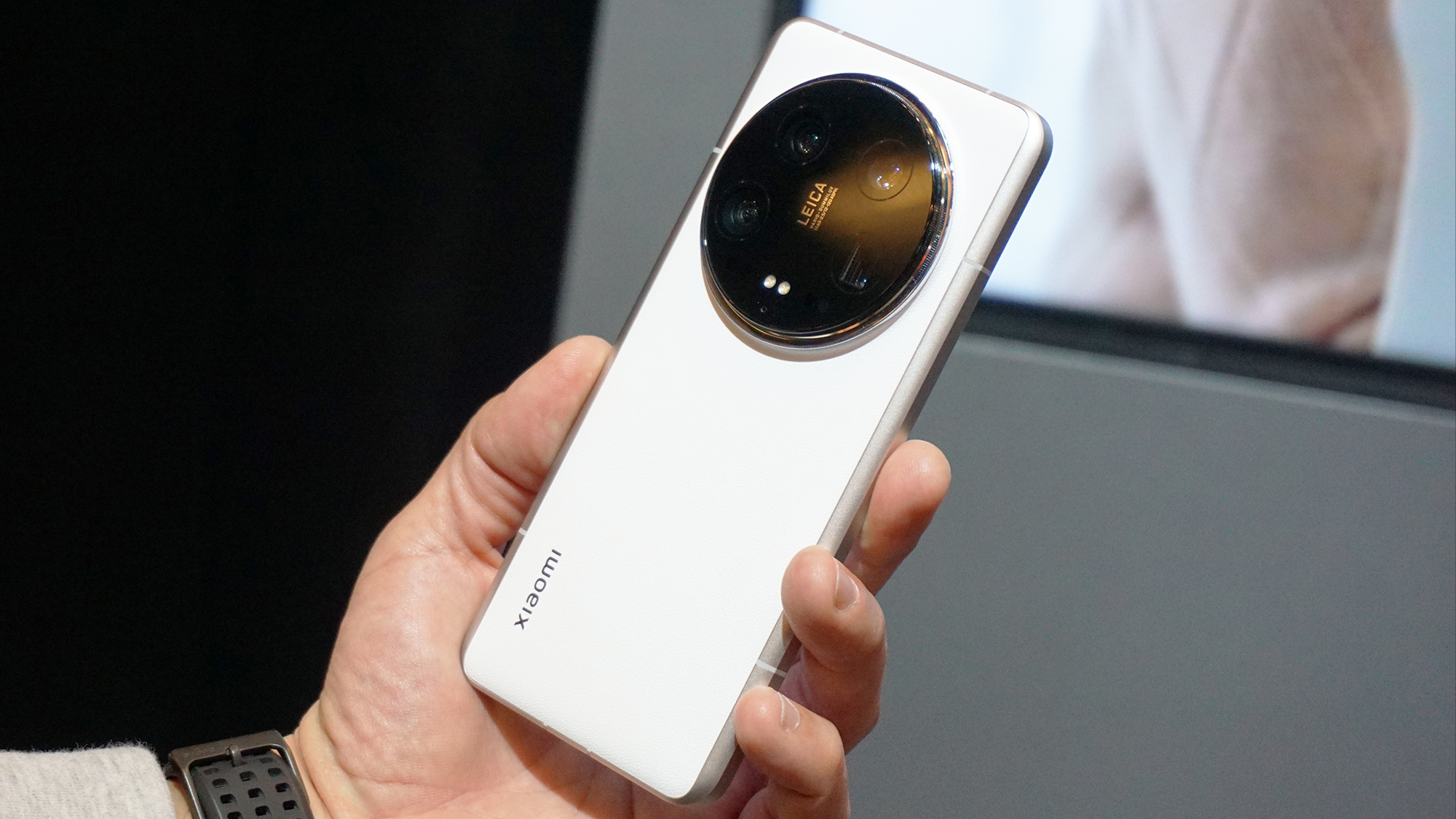
Last year’s Xiaomi 13 Ultra was a stellar no-holds-barred entry into the smartphone space, but as a China-only release, its power and potential remained out of reach for those outside that country looking for an alternative premium option to the usual suspects from the likes of Apple and Samsung.
In time for MWC 2024, Xiaomi has corrected this error by officially taking the 13 series’ successor – the new Xiaomi 14 Ultra – global less than a week after its Chinese debut.
As you might expect, it’s got Qualcomm’s latest Snapdragon 8 Gen 3 chipset at its heart, plus charging that’s more than twice as fast as what you’d get from the mainstream competition, a quartet of rear 50MP cameras with Leica co-engineered optical tech, and a suite a new AI abilities to rival even the mighty Samsung Galaxy S24 Ultra.
That camera array is the phone’s main showpiece, especially when you consider that Xiaomi is also bringing its compatible Photography Kit accessory to the party. This adds a dedicated camera grip with hardware controls, an additional onboard battery, and a 67mm filter ring for attaching polarizers and the like, to up the 14 Ultra’s impressive photography skills even further.
Best foldable phone: Honor Magic V2
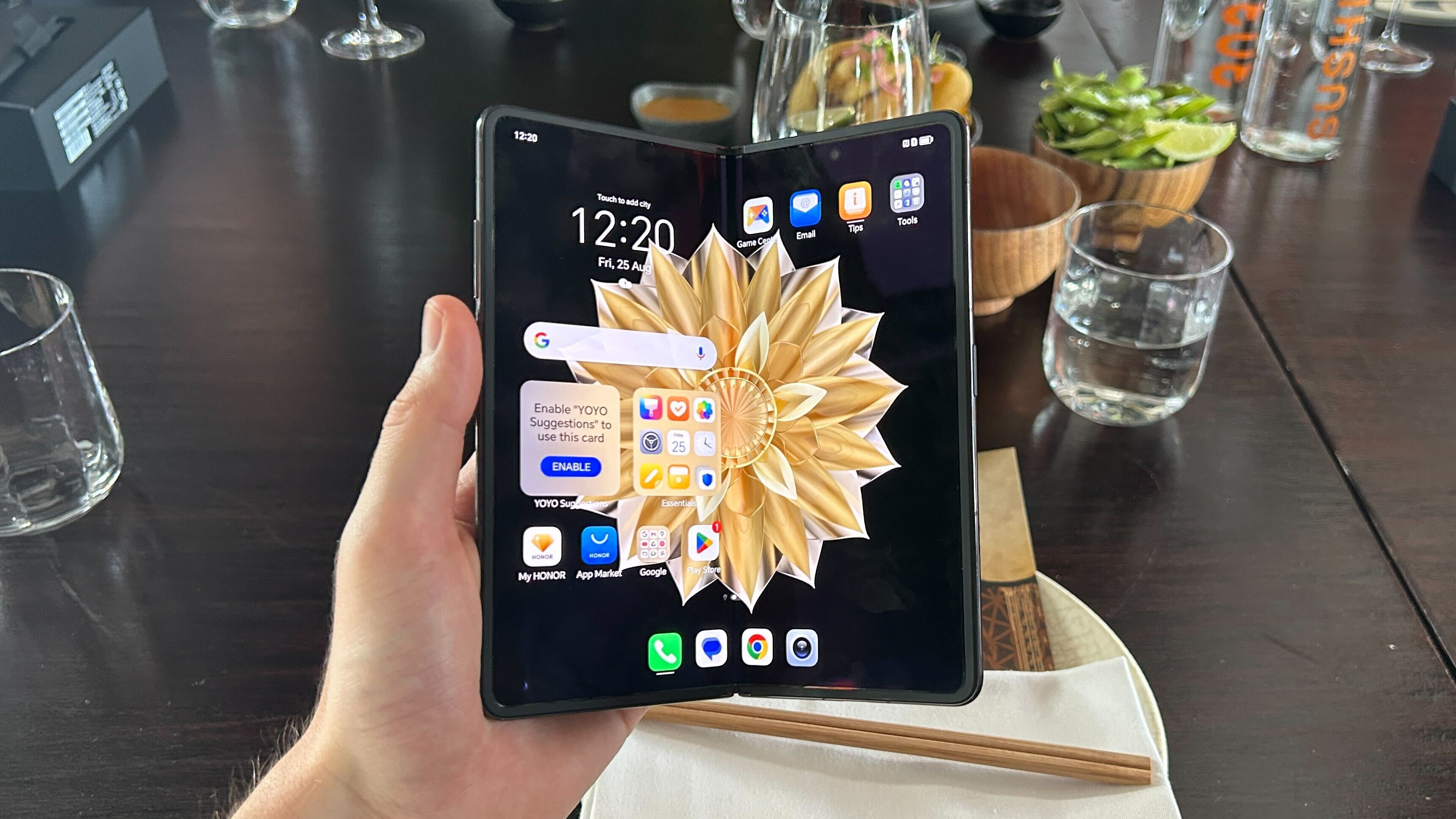
Despite having already been unveiled worldwide, the Honor Magic V2 took pride of place at Honor’s MWC 2024 stand – and it’s not hard to see why. This improbably slim foldable remains the world’s thinnest (and lightest) inward-folding smartphone, measuring just 9.9mm thick when folded and 4.7mm when unfolded. By comparison, the next-thinnest foldable phone, the OnePlus Open, measures 5.8 mm at its thinnest point, and weighs some 14g more than Honor's device. So, if style and portability are your top priorities, the Magic V2 is hard to beat.
But there’s more to this phone than just good looks. Sure, Honor’s software still lacks the polish of, say, Google’s more streamlined take on Android, and you won’t get an IP water resistance rating with the Magic V2; but Honor’s latest foldable is a feature-packed device nonetheless.
Beyond its impressive form factor, the Magic V2 boasts a 7.92-inch foldable OLED display, which itself offers a 120Hz refresh rate, HDR10+ support and a peak brightness of 1,600 nits. The phone’s second screen is a 6.43-inch, 120Hz OLED cover display, and everything is powered by Qualcomm’s Snapdragon 8 Gen 2 chipset. Put simply, the Honor Magic V2 is a worthy recipient of our MWC Best Foldable award.
Best phone innovation: Honor Magic 6 Pro silicon carbon battery
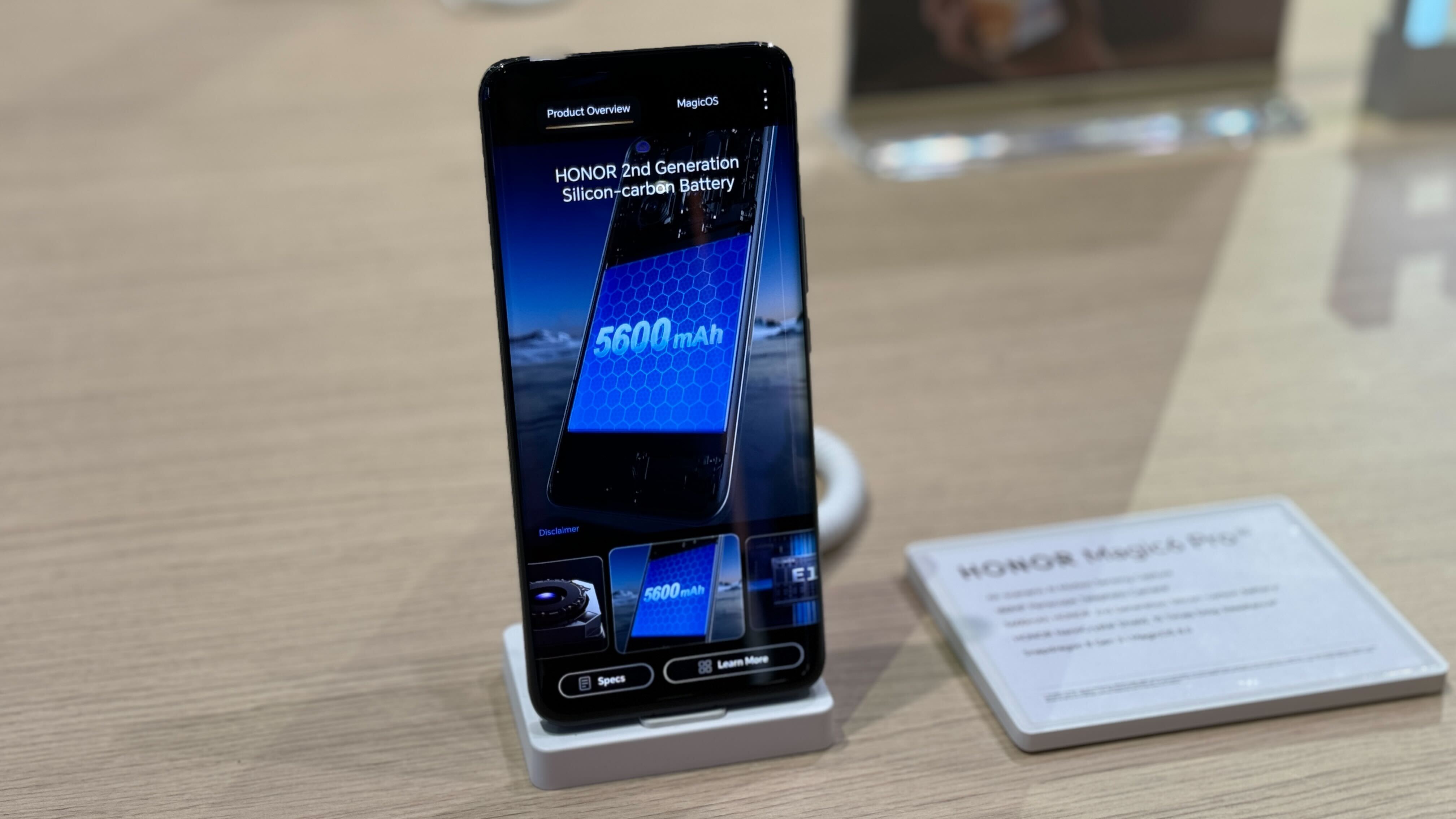
Honor’s Magic 6 Pro flagship boasts plenty of premium features, but we’re most impressed by its battery technology, which is derived from the electric vehicle industry. Specifically, the Magic 6 Pro uses a silicon-based 5,600mAh battery, the composition of which allows it to store more energy at the same density as carbon-based lithium-ion batteries.
In layman’s terms, this means that, despite its increased capacity, the phone’s battery is no larger or heavier than smaller-capacity batteries in competing flagship phones. The Magic 6 Pro’s silicon-carbon battery is much more resistant to cold temperatures, too; Honor claims you’ll get 81 minutes of YouTube playback with the phone at just 10% battery in -20C temperatures. And, to top things off, the Magic 6 Pro can charge at 80W speeds, or 66W wirelessly with Honor's optional charging pad. In other words, the Honor Magic 6 Pro could well be our new battery champion.
Laptop of the show: Samsung Galaxy Book 4
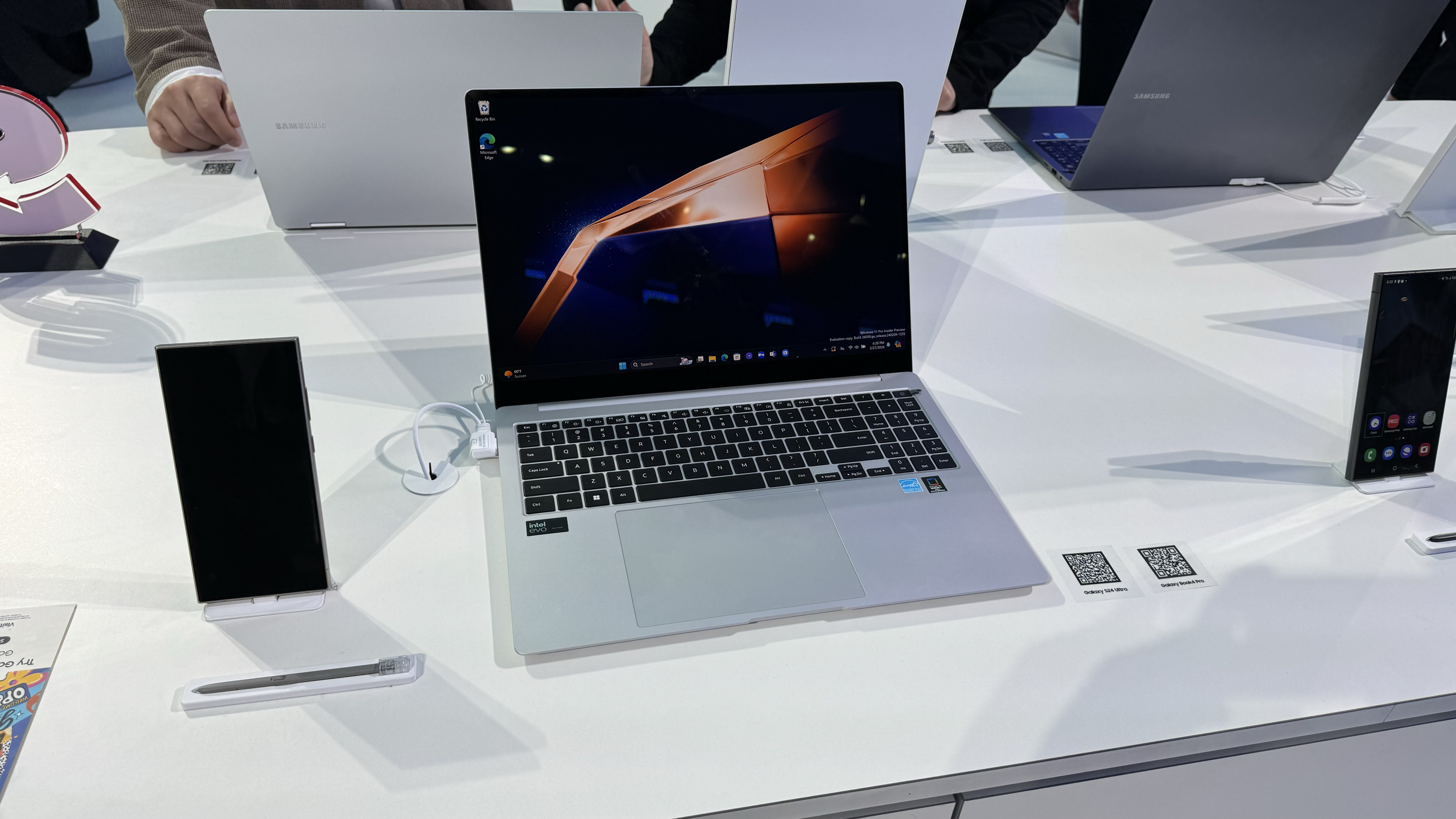
While Samsung's Galaxy Book 4 was announced last year, the laptop has only just made is way out of South Korea, and seeing it in the glass and metal has won us over. There's a MacBook Air-like quality to the Galaxy Book 4's design and finish, with a very big trackpad to make zipping a cursor around the glorious 120Hz AMOLED touchscreen a joy.
Coming in standard, Pro and Ultra variants, the Galaxy Book 4 comes in a suite of specs configurations to suit all manner of users, with access to the latest Intel processors and the option to upgrade to an Nvidia GeForce RTX 4070 graphics card.
But specs are a little by-the-by here; what's really got our attention is how the Galaxy Book 4 can work with other Galaxy devices, so you can start a task – say video editing – on a Galaxy S24, and easily port it over to the Galaxy Book 4 paired with the Galaxy Buds 2 Pro earbuds and continue working with minimal disruption. This is an Apple-esque approach to creating a slick ecosystem that works well, and we're all for it.
Best computing innovation: Lenovo's Project Crystal
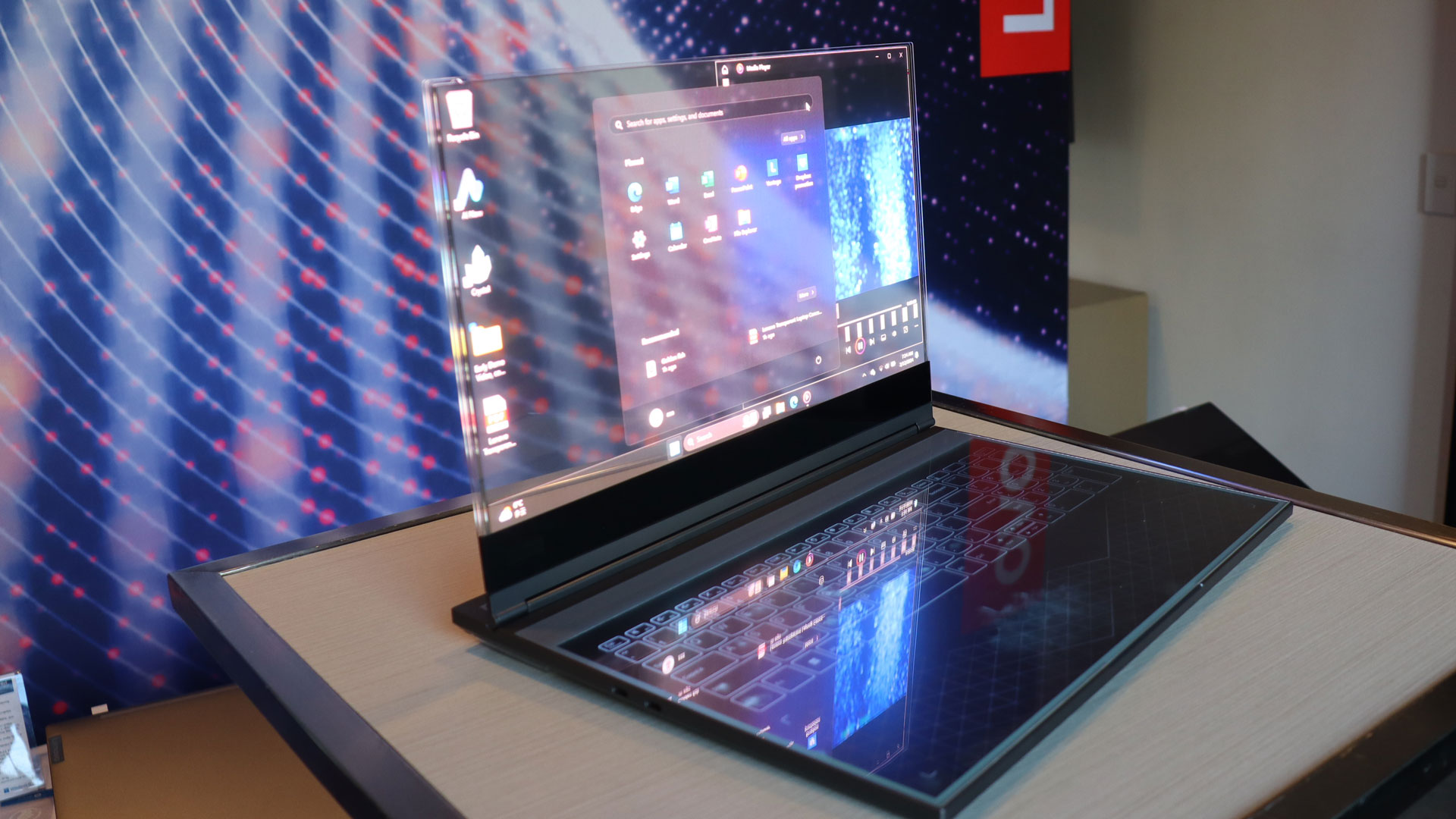
We're not sure anyone ever asked "What if I could look through my laptop's display?", but regardless, Lenovo has created a laptop with a transparent display. And it's really rather cool.
Dubbed Project Crystal, this concept laptop uses a transparent micro-LED panel fitted between two panes of Gorilla Glass to equip the machine with a screen that you can see through as if it were just a rectangle of pure glass. And despite this, the icons and windows on the display were still plenty crisp and clear.
So what's the point of this? Well, it's been designed with the idea of creating a more collaborative laptop experience, enabling users to see other people when they're also looking at the screen, instead of being hidden behind it. Plus, there are AI-powered augmented reality options thanks to an outward-facing webcam on the laptop's rear.
You're unlikely to see Project Crystal yield a load of Lenovo laptops with transparent screens in the near future. But this is an intriguing glimpse at where computer screens could go next, and how they might evolve into something that almost blends into its environment rather than sticking out.
Best work laptop: Lenovo ThinkPad T14 Gen 5
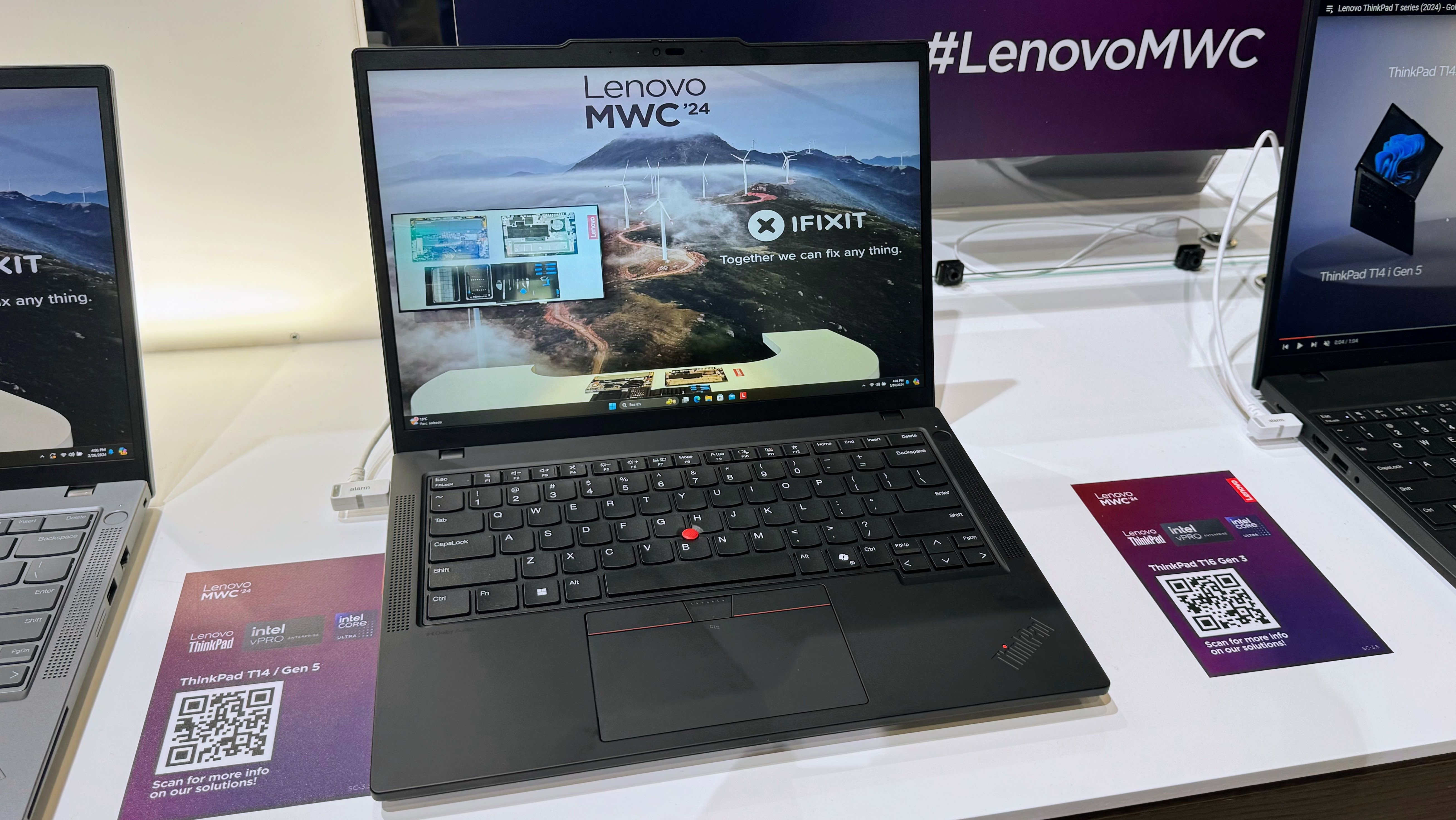
Lenovo's ThinkPads have long been the workhorse laptops of many a business, and the new ThinkPad T14 Gen 5 is no different – at least not from a quick glance.
There's a whole host of spec options to choose from, so you or your business can get a laptop that has the right parts for the job. But the award-worthy part of the new ThinkPad T14 is how Lenovo's designers worked with repair gurus iFixit to create a laptop that's far easier to repair than ever before.
The ThinkPad T14 (and the new ThinkPad T16) score an impressive 9 out of 10 on iFixit's repairability scale, with components able to be easily removed and replaced thanks to everything being clear and easy to access, and there not being a plethora of screws to get past or glued-down parts to deal with.
This smart approach means the ThinkPad T14 Gen 5 could be repaired by users rather than needing to be sent to specialists, and it also makes for a laptop that's more sustainable, given that parts can be swapped out without he need to replace components like the motherboard. Now we just need more laptop makers to follow Lenovo's example.
Best health and fitness tech: Samsung Galaxy Ring

Was this category likely to have any other winner? Samsung’s tiny new tracker had been one of the major talking points of the technology world for months before its official reveal. In our hands-on session, we got to know a lot about the Samsung Galaxy Ring, including a few specs like battery sizes, its overall design, and its sleep-tracking capabilities.
It’s packing four new metrics which the Samsung Galaxy Watch 6 doesn’t have, and it uses some of these to generate a Vitality score. Its concave shape protects it from scratches, and it also has some movement-tracking capabilities, such as step count.
Some of the best smart rings have been around for quite a few years now, but even the Oura Ring isn’t very widely adopted, thanks in part to a prohibitive price and added subscription model. A big name like Samsung embracing the category with such fanfare heralds a new, minimalist, miniature era for wearables, and I couldn’t be more excited about the future of health and fitness tech – it’s no longer all about wrist-based tracking.
Best wearable: Humane AI Pin
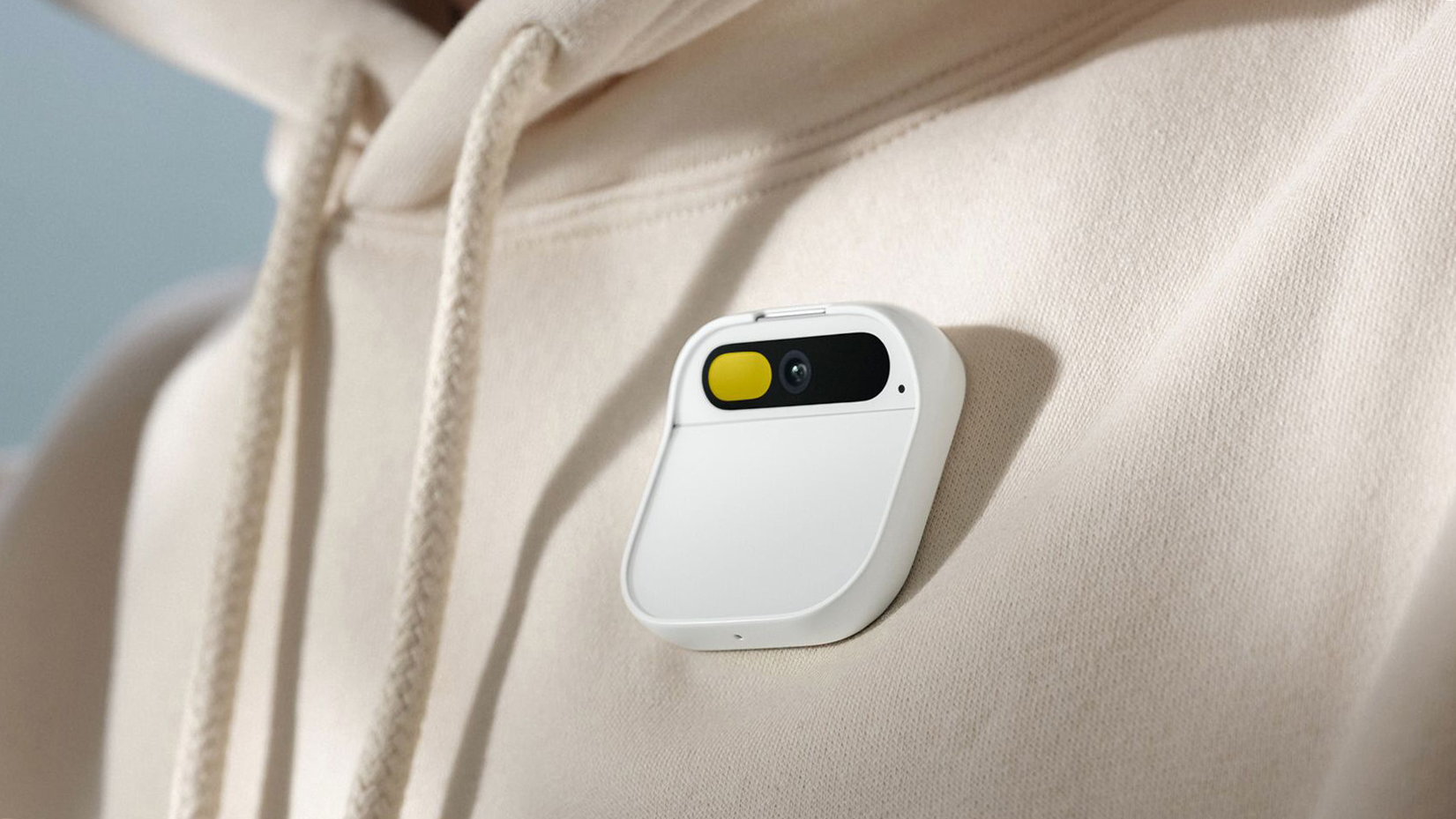
Artificial intelligence is coming for us all, even in the wearables space, and the Humane AI Pin is one of the first wearables that's really trying to harness this, in an attempt to “turn the world into your operating system” via a personal assistant the size of a lapel pin. With a camera, microphone, GPS and cellular connection, the OpenAI-powered device drinks in information and requests such as “how much is $50 dollars over here” and answers via a speaker, LEDs and a laser ink display that projects onto your palm. The camera records your gestures, interprets them and cycles through the options on the laser display.
It’s really innovative stuff. I was skeptical at first, until I saw it all work in person, and I was positively delighted, especially seeing how considerations had been made for various practical problems. The magnetic backing that allows it to clip onto your clothing is also a battery pack, LEDs on the front of the display flash to indicate when the device is recording, and all data is end-to-end encrypted for security.
It’s not quite perfect quite yet: the AI confused my shirt for a hoodie, and it’s very expensive ($699, plus a $24 monthly subscription) and US-only right now. However, like the Apple Vision Pro, that price is likely to come down with subsequent generations. It’s the most unique, forward-thinking wearable at MWC this year.
Best AI innovation: ai.io’s 3D Athlete Tracking
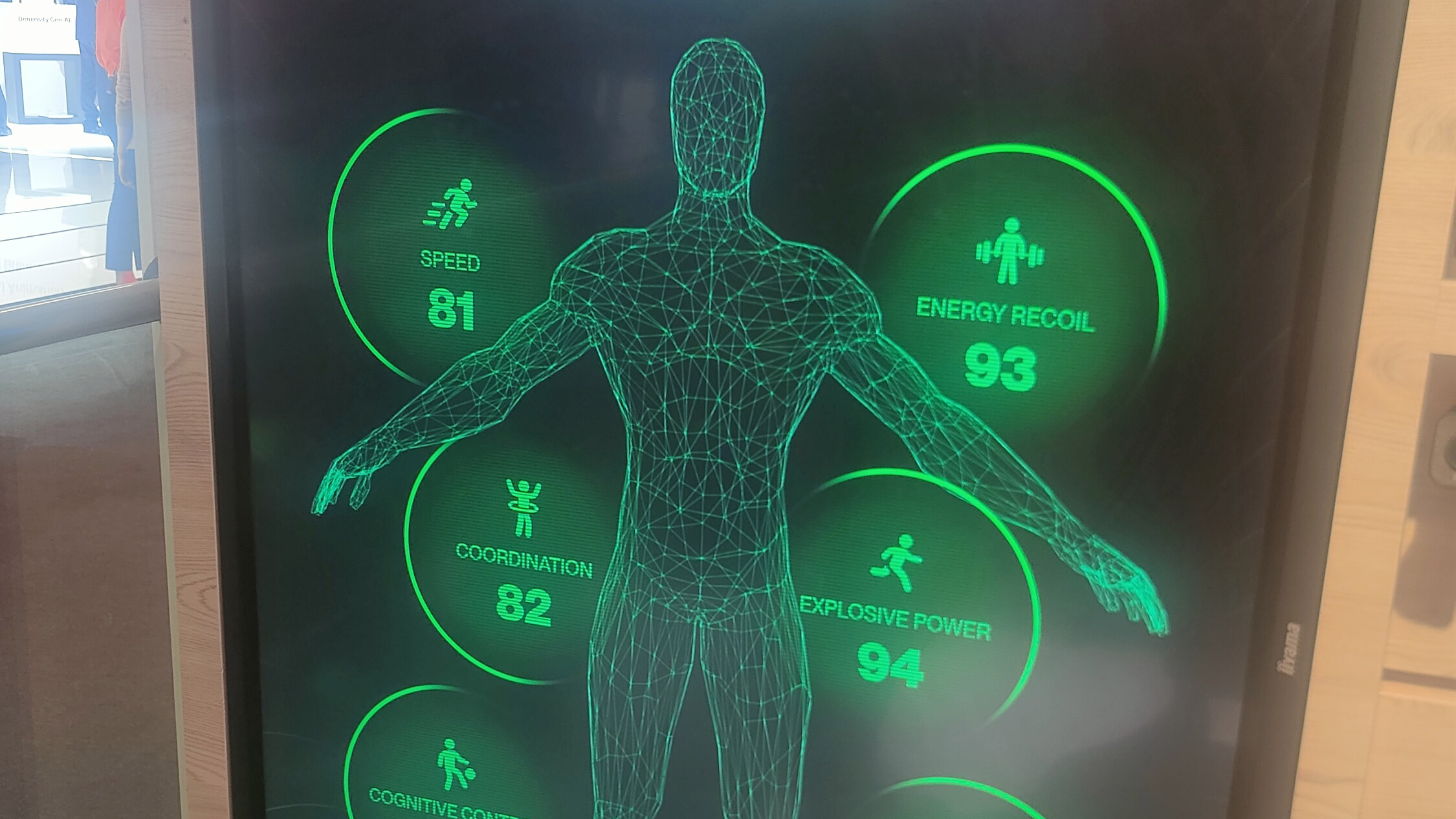
This is a very cool, niche-case use for artificial intelligence: 3D Athlete Tracking, or 3DAT. Partnered with Intel and currently used by the Chelsea soccer team in the UK, ai.io’s 3DAT technology is used to analyze athletic performance, looking at explosive power, speed and energy recoil among other metrics, and providing tangible scores based on footage alone.
It’s currently being used by soccer players via an app, aiScout, which uses this 3DAT technology to analyze footage of amateur players, get detailed information to help improve performance, and pass the information on to talent scouts. Smartwatches have democratized the sort of metrics that were once only available to elite athletes, and 3DAT is taking the next step in that direction.
However, it’s not just for the soccer world; conversations are said to be happening with the NFL, and when quizzed, a representative revealed that other disciplines like running were "on the roadmap". I’d personally love to not have to find a specialist running store to conduct a gait analysis for me, and instead just be able to get information about my running using the treadmill at my local gym. It sounds like with ai.io’s 3DAT technology, that could happen sooner rather than later.
Best smartwatch: OnePlus Watch 2
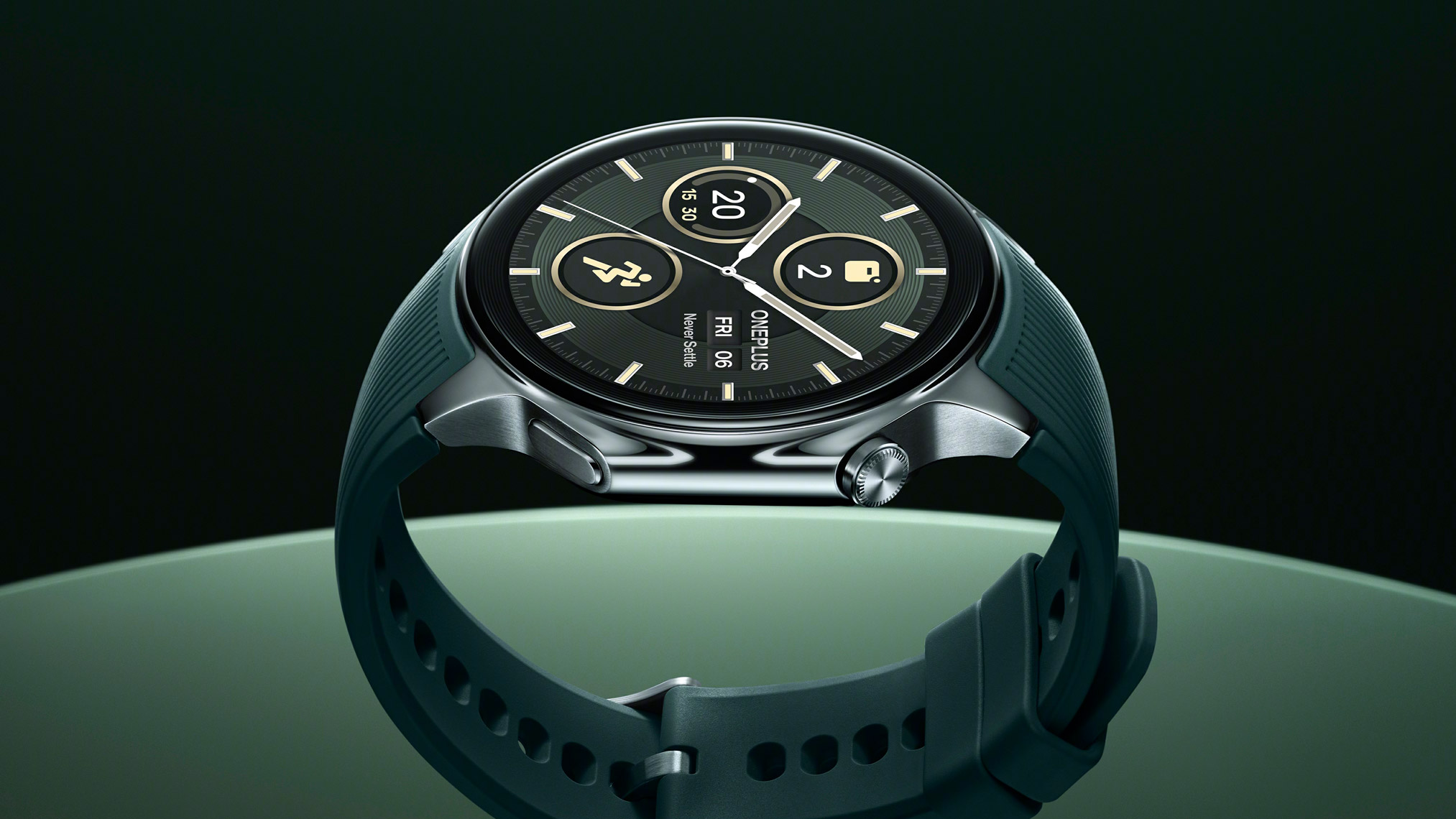
The OnePlus Watch 2 is a little like last year’s Samsung Galaxy Watch 6: a big, beefy, premium-construction, longer-lasting Wear OS watch that's tailor-made for endurance activity, and it looks stellar. However, OnePlus’ impressive battery life – 100 hours is fantastic for a smartwatch, and you get 12 days on Power Saver mode – is reportedly down to it packing two separate chips, an innovation OnePlus dubs “dual engine architecture”.
The BES2700 chip runs RTOS, which covers the basic features such as movement tracking and other basic functions, which saves on battery life. However, when you open the watch up to have a play, it switches to the Qualcomm Snapdragon W5 and Wear OS, with all the bells and whistles Google’s operating system offers. The end result is a fantastic Wear OS watch which lasts four times as long as Google’s flagship Pixel Watch 2.
Best EV: Xiaomi SU7
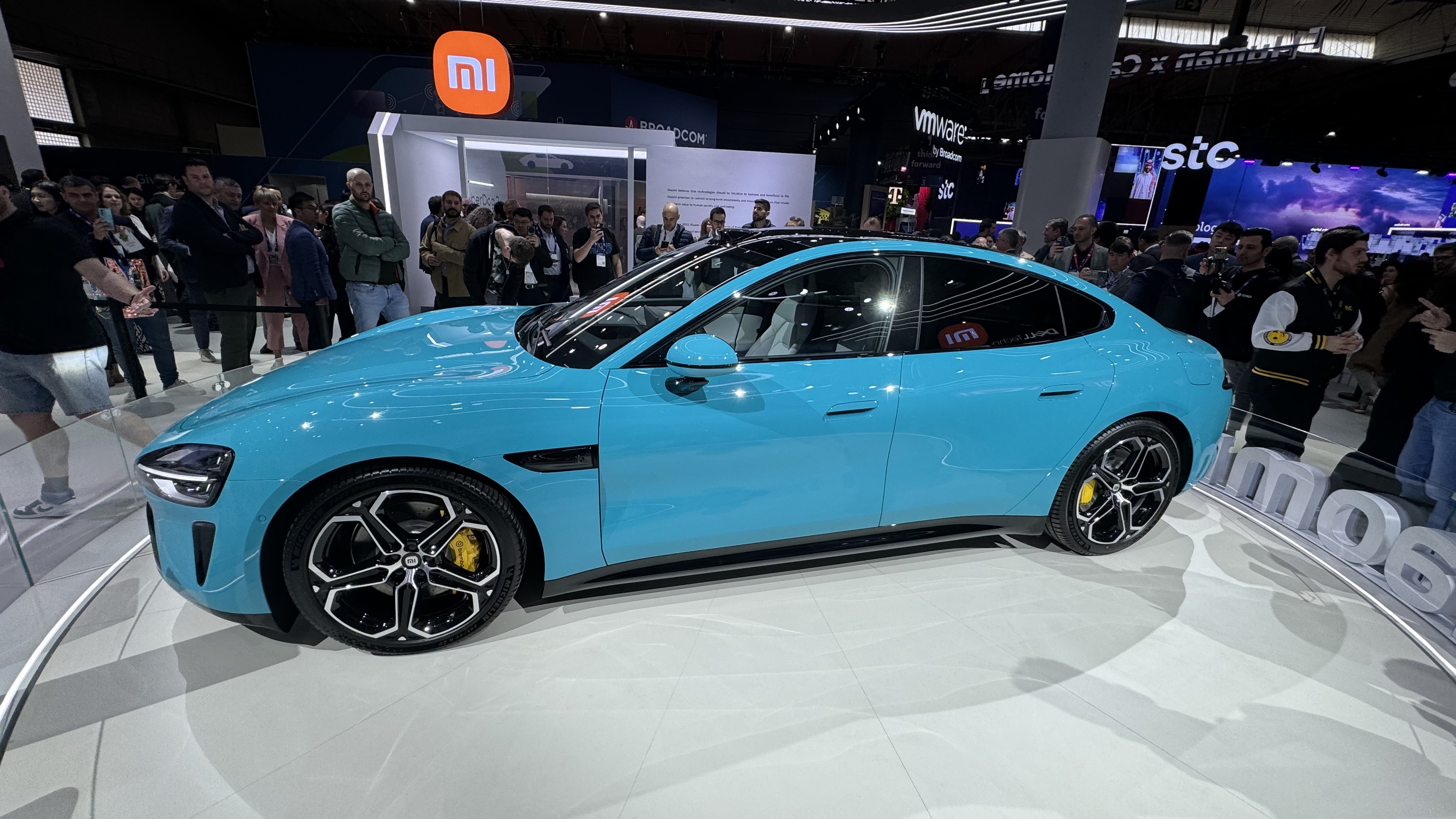
While Xiaomi’s renown in the smartphone space is indisputable, its presence in the EV market is comparatively non-existent; however, that’s now changing with its first car: the Xiaomi SU7.
The company debuted its new set of wheels in China in late December 2023, but used Barcelona as the stage to confirm the SU7’s expansion to Europe and beyond. While there were a few EVs (and the odd flying car) on the show floor this year, the SU7 leads with an impressive spec sheet, and ecosystem integration through its dash-mounted Xiaomi HyperOS-power in-car experience.
The SU7 arrives in two powertrains: the standard single-motor variant and the dual-motor, all-wheel-drive SU7 Max, which boasts a range of 800km, fast-charges to 220km of range in five minutes, has a top speed of 265 km/h (165mph) and can hit 100km/h (62mph) in just 2.78 seconds. It’s also a looker, with a longer wheelbase than a Tesla Model 3 or a Porsche Taycan, and a front end that takes cues from a McLaren 720S/750S; the Aqua Blue paint job doesn’t hurt either.







